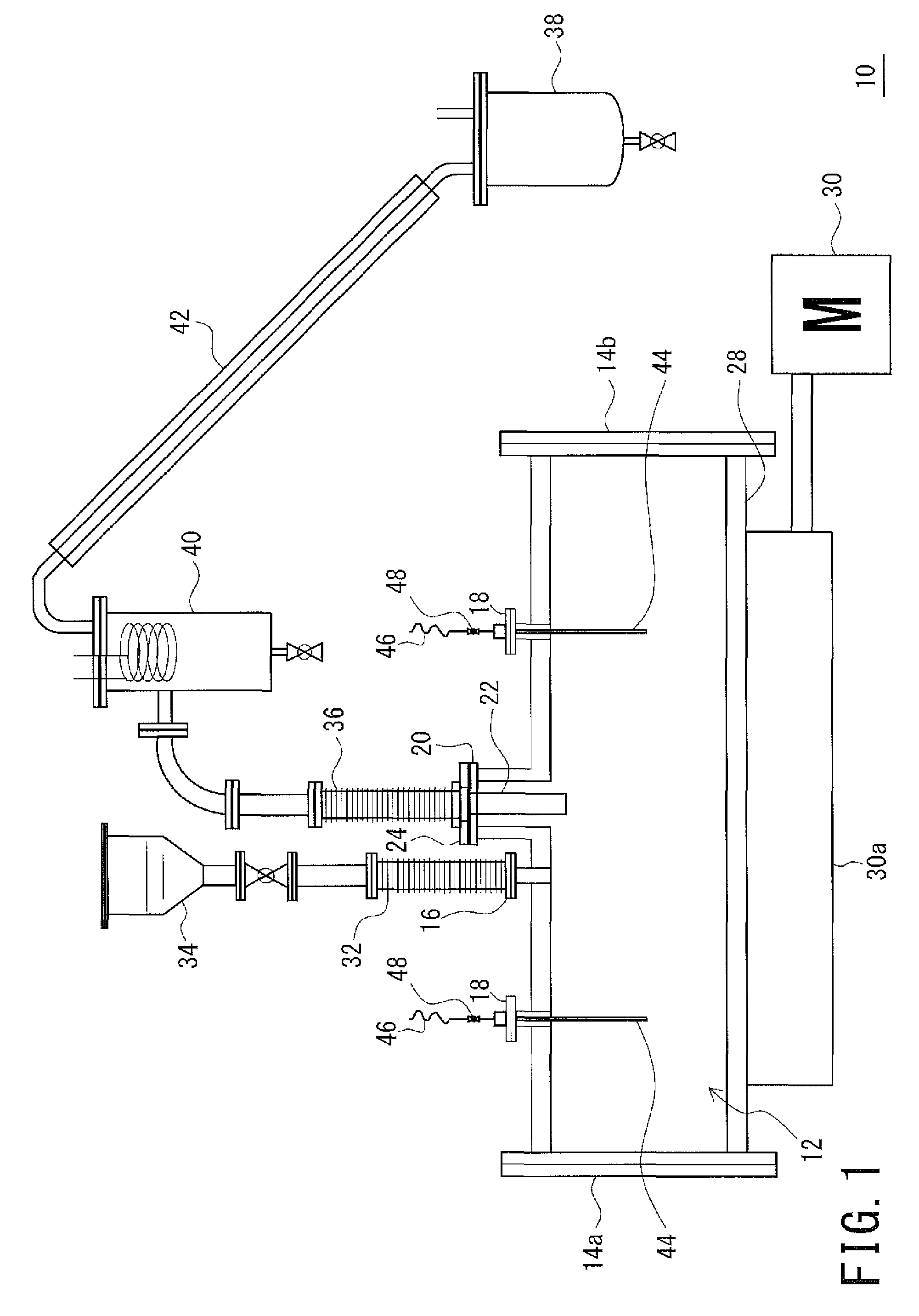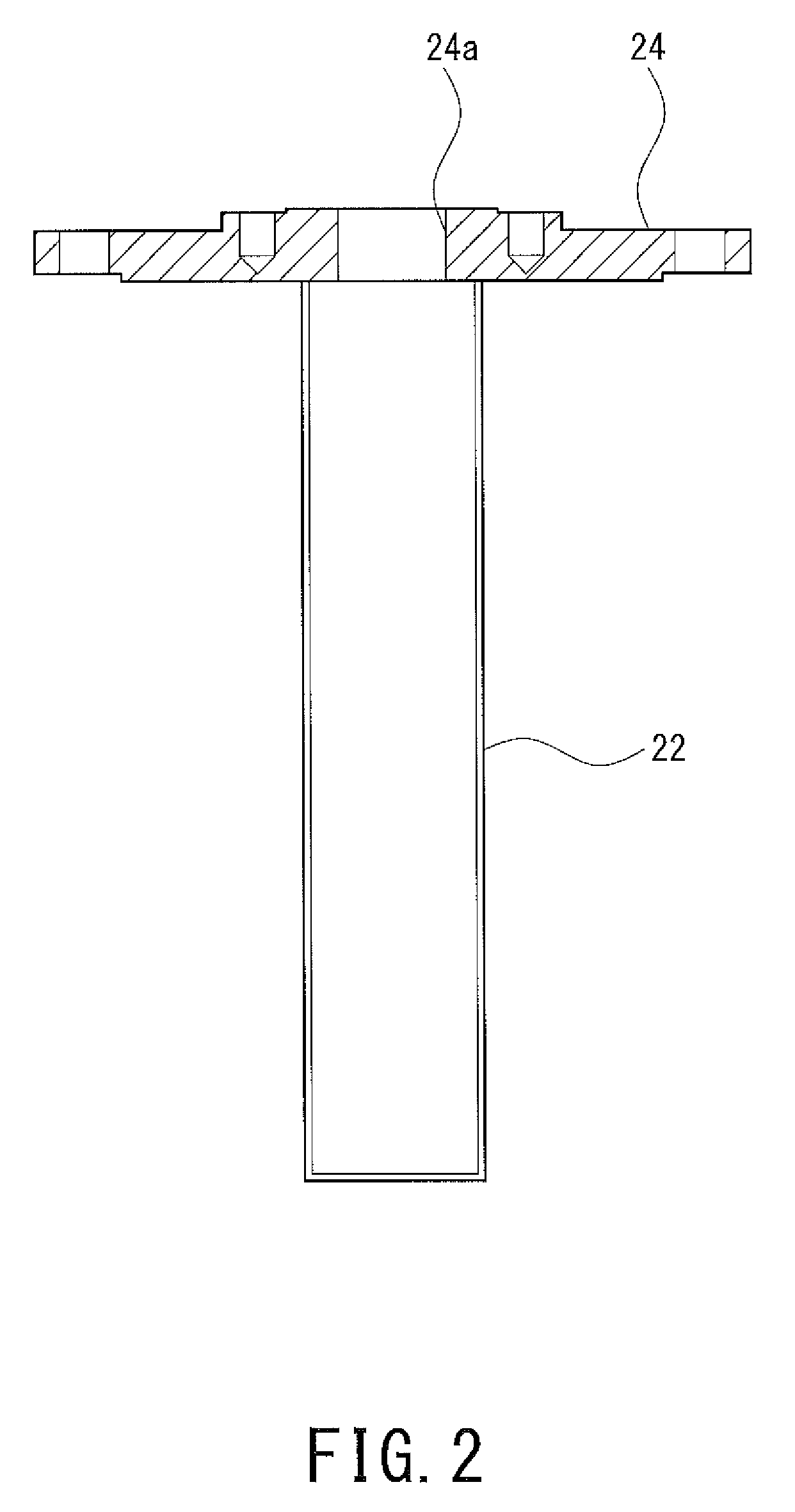Method for producing chloropolysilane and fluidized-bed reactor
a technology of chloropolysilane and fluidized bed reactor, which is applied in the direction of halogenated silane, silicon halogen compound, chemistry apparatus and processes, etc., can solve problems such as blockage in the reactor, and achieve excellent preventive effect, improved reaction yield, and improved reaction yield
- Summary
- Abstract
- Description
- Claims
- Application Information
AI Technical Summary
Benefits of technology
Problems solved by technology
Method used
Image
Examples
example 1
[0112]Chlorination reaction was conducted with the use of the PTFE filter as an outlet filter. The size distribution of fine particles attached to the surface of the PTFE filter was measured after completion of the reaction. The size distribution of the trapped fine particles has three peaks as shown in FIG. 6: a first peak is in the range of 0.03 to 1 μm with centered at 0.2 μm, the second peak is in the range of 1 to 100 μm with centered at 10 μm, and the third peaks is in the range of 100 to 1000 μm with centered at the 500 μm. Since the median particle size of the silicon raw material is 520 μm, it is assumed that the fine particles having a size of 1 μm or smaller was contained originally in the raw material, or was generated during the reaction. Meanwhile, it is assumed that the fine particles having a size around 10 μm was generated by aggregation of the fine particles having a size of 1 μm or small. These results indicate that the PTFE filter trapped fine particles having a ...
example 2
[0114]Chlorination reaction was conducted with the use of the sintered metal filter (pore size: 20 μm) as an outlet filter. The differential pressure between the back and front surfaces of the filter rose up to 0.07 MPa in four hours of the reaction. In addition, when the surface of the sintered metal filter was observed after the completion of the reaction, accumulation of the fine particles was found on the surface of the filter with a thickness of several millimeters. Thus, the filter showed a slight tendency to be blocked.
example 3
[0115]Chlorination reaction was conducted with the use of the sintered metal filter (pore size: 100 μm) as an outlet filter. No rise of differential pressure between the back and front surfaces of the filter was observed even after four hours of the reaction. In addition, when the surface of the sintered metal filter was observed after the completion of the reaction, no accumulation of the fine particles was found on the surface of the filter. Meanwhile, the sintered metal filter showed a tendency of allowing passage of fine particles having a particle size of 1 μm or less.
[0116]In Examples 1 to 3, blockage caused by attachment of higher-order silicon chloride was not observed on the surfaces of the outlet filters. In addition, it was found that using only the outlet filters prevents the particles from flowing out to some extent. Therefore, it was confirmed that according to the present invention, reaction yields is improved while blockage caused by attachment of higher-order silico...
PUM
| Property | Measurement | Unit |
|---|---|---|
| temperature | aaaaa | aaaaa |
| pore diameter | aaaaa | aaaaa |
| temperature | aaaaa | aaaaa |
Abstract
Description
Claims
Application Information
 Login to View More
Login to View More - R&D
- Intellectual Property
- Life Sciences
- Materials
- Tech Scout
- Unparalleled Data Quality
- Higher Quality Content
- 60% Fewer Hallucinations
Browse by: Latest US Patents, China's latest patents, Technical Efficacy Thesaurus, Application Domain, Technology Topic, Popular Technical Reports.
© 2025 PatSnap. All rights reserved.Legal|Privacy policy|Modern Slavery Act Transparency Statement|Sitemap|About US| Contact US: help@patsnap.com



